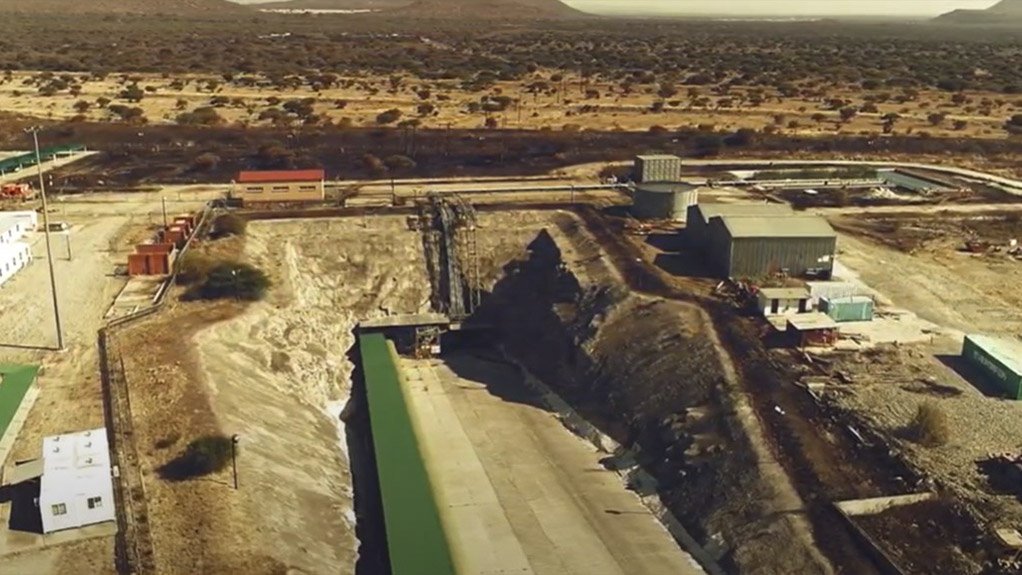With a focus on research, development and innovation (RDI), the Mandela Mining Precinct (MMP) is implementing a new strategy for the next five years, with a focus on the future of the South African mining sector.
Speaking at the 2024 Mining Technology and Innovation Showcase, on November 18, MMP executive director Julie Courtnage noted that the new strategy, which was approved on October 30, reflected a shift in thinking for the public-private partnership.
She noted that the new strategy included shifting MMP’s focus from having a reactive problem-solving mindset to an anticipatory future focus; moving away from siloed research programmes to larger holistic research portfolios; and moving from point source solutions to a systemic view of research.
The new strategy also aims to shift from an exclusive focus on narrow-reef hard rock mining to other commodities and other types of mining.
“The pursuit of innovation breakthroughs by the MMP is, therefore, going to be through forging a culture and an operating model of a collective of experiential learning and collective experimentation, and we are embracing all the connections with all co-creators,” she said, pointing to the memorandum of understanding that was signed between the MMP and the Mining Qualifications Authority in October.
“But the one thing we see is collaboration is hampered by a lack of information flow about what is going on in mining RDI and in mining itself, and so our priority focus over the next five years is, how do we get information to flow, either at site level or across the whole sector. That is quite a dramatic vision and we are very proud of it,” she added.
Courtnage said the changing strategy would match the MMP’s operating model to sector realities, adding that the MMP would have more of an impact at systems level rather than at point source technology level.
“This will also deliver much simpler scalability and, therefore, impact. We should get improved solutions when we’ve got people working together with good information flow.”
Courtnage also discussed the MMP’s vision of co-creating Africa's first test mine with multiple stakeholders.
She added that the MMP was also currently looking at total resource asset management technologies and approaches for asset evaluation and decision-making at an integrated level.
She also noted that the MMP plans to establish a sector-wide mining equipment and technology assessment, verification and certification process.
“Through centralising these kinds of processes, we aim for quite phenomenal cost savings and, of course, the safety benefit, because, as we know, off-the-shelf products are not always suited for the environment in which we are working.”
Courtnage also highlighted the focus on automation and mechanisation linked to improved skills and better job opportunities.
The MMP is also looking at tracking and monitoring the impact of innovation on aspects such as safety, productivity and costs, as well as at the possibility of establishing resource recovery zones linked to local economic development to support localisation, industrialisation, improve job opportunities, resource security and to reduce the socioeconomic mining dependency patterns.
“The path that the MMP envisages for at least the next five years takes us on quite a challenging journey and an exciting one to the African Mining Hub. That is not a new name, it's not a location, it's a state of being and a state of operating and we intend to deliver this strategy through conscious connections, very unusual ways of working within this increasing complexity that we face,” she said.
Also speaking at the event, Minerals Council South Africa CEO Mzila Mthenjane highlighted the council's efforts to foster innovation through partnerships and collaboration with key organisations.
He described the relationship between the private and public sectors, in the form of the Minerals Council, the Council for Scientific and Industrial Research (CSIR) and the Department of Science, Technology and Innovation (DSTI), through the MMP, as “deliberate and intentional”.
Mthenjane noted that the South African mining and minerals sector was well-positioned to grow, given ongoing efforts and successes from Operation Vulindlela 2.0 at revitalising the country’s energy, water and logistics infrastructure, as well as addressing crime and corruption.
“This will open investment opportunities for exploration and development of minerals that are critical to ours, as well as the global, energy transition to unlock our future,” he said.
He said the MMP’s new growth strategy aimed to move beyond isolated solutions toward larger-scale innovations for the entire mining ecosystem. He also expressed that the Minerals Council welcomed the aims of the MMP.
“Recognising the importance of industry support, the MMP depends on the dedication of its partners to champion its initiatives.
“The MMP also recognises the need to measure the broader impact of its work and is planning to implement appropriate mechanisms across all research and strategic initiatives.
“The Minerals Council remains pleased to have partnered with the DSTI, the CSIR, through the MMP, and we look forward to continue this collaboration for the benefit of the mining industry, South Africa and the world,” he said.
Meanwhile, DSTI deputy director-general Dr Mmboneni Muofhe noted that the MMP’s strategy aligned with the science, technology and innovation decadal plan and the medium-term development plan.
“We put a strong emphasis on the MMP’s new strategy on information flow, knowledge transfer and also entrepreneurship development and then also making sure that when we develop technologies and innovations, that we do in the context of our own country,” he said.
Edited by: Chanel de Bruyn
Creamer Media Senior Deputy Editor Online
EMAIL THIS ARTICLE SAVE THIS ARTICLE
ARTICLE ENQUIRY
To subscribe email subscriptions@creamermedia.co.za or click here
To advertise email advertising@creamermedia.co.za or click here













